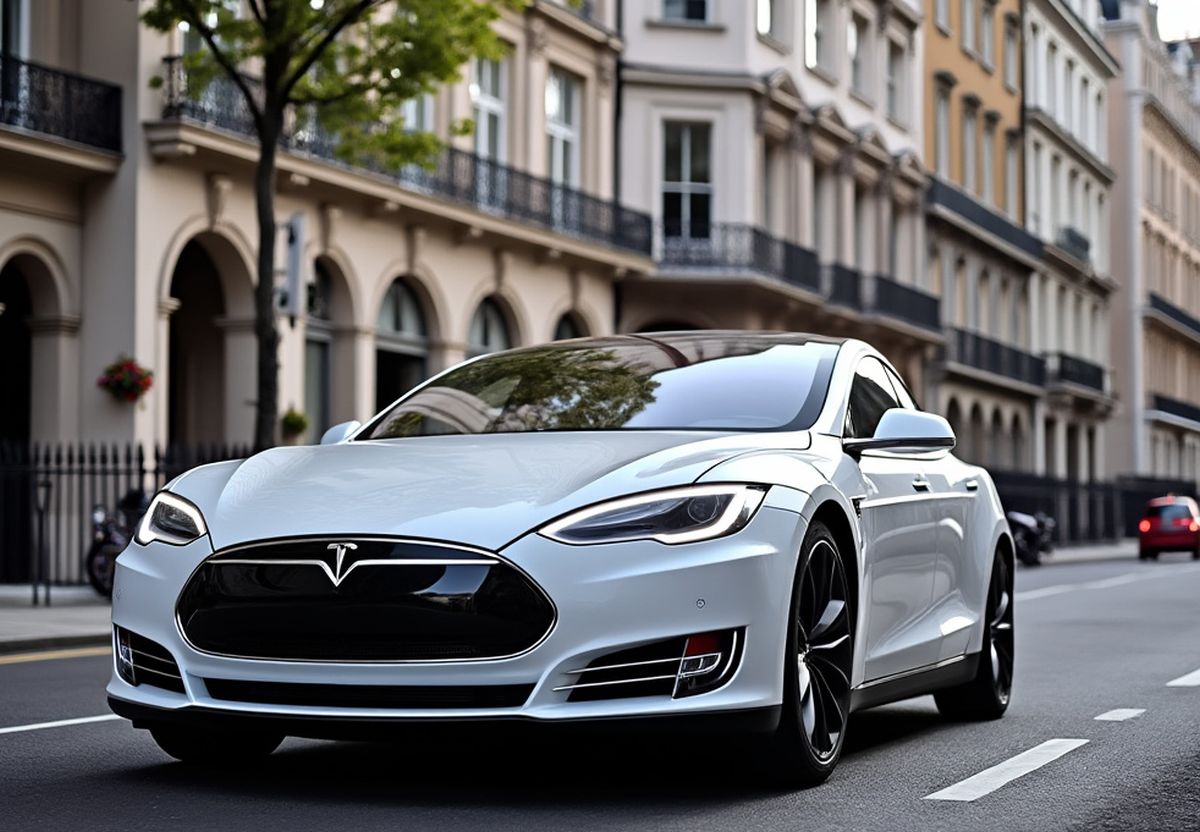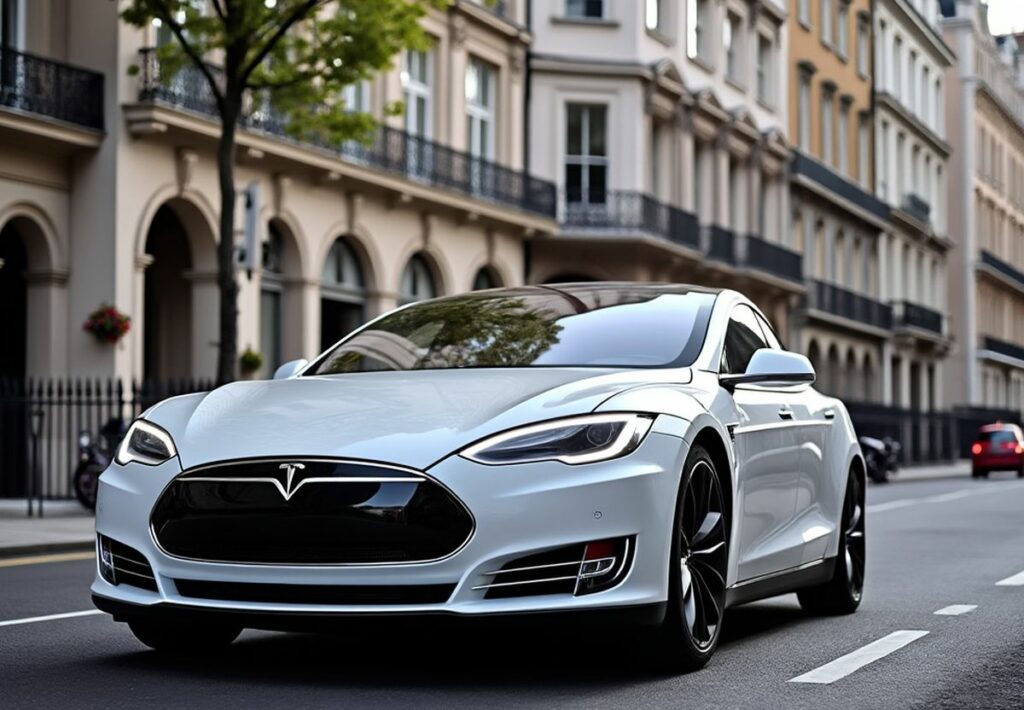The advent of self-driving cars promises to revolutionize transportation, but navigating the complex landscape of regulations, safety, and environmental impact is crucial for their successful integration in Europe. In this article, we delve into the current state of self-driving car technology in Europe, exploring the regulatory frameworks, safety measures, and environmental considerations that shape its future. Whether you are a tech enthusiast, a policy maker, or a concerned citizen, understanding these aspects is essential for embracing the potential benefits and addressing the challenges of autonomous vehicles. Get ready to explore the road ahead for self-driving cars in Europe.
Self-driving cars in Europe: an overview
Self-driving cars in Europe represent a significant shift in transportation. They combine advanced technology with the potential to enhance road safety and reduce traffic congestion. Major automakers and tech companies invest heavily in developing these vehicles, focusing on automation and sustainability. As European cities evolve, regulations adapt to ensure safe integration of autonomous vehicles into existing infrastructure. Understanding this landscape is crucial for professionals interested in innovative solutions that address both urban mobility challenges and environmental concerns associated with self-driving cars in Europe.
The evolution of self-driving technology
The evolution of self-driving technology in Europe showcases rapid advancements. Companies integrate artificial intelligence and machine learning to enhance vehicle autonomy. Testing on public roads expands, leading to improved safety protocols and regulations. As consumer confidence grows, these innovations pave the way for a more sustainable transportation future with selfdrivingcars europe.
Key players in the European market
Several key players drive the self-driving cars in Europe. Major automotive manufacturers like Volkswagen, BMW, and Mercedes-Benz lead the charge with innovative technologies. Additionally, tech companies such as Waymo and Tesla expand their influence by developing advanced autonomous systems. Partnerships between automakers and startups also emerge, creating a dynamic ecosystem that fosters innovation while addressing safety and regulatory challenges across various European markets.
Navigating regulations and policies
Navigating the regulatory landscape for self-driving cars in Europe requires understanding both EU and national policies. These regulations shape how autonomous vehicles operate on European roads.
- The EU establishes comprehensive guidelines for testing and deploying self-driving technology.
- National laws vary, affecting insurance requirements and liability issues.
- Compliance with safety standards is mandatory before market entry.
- Data privacy regulations impact how autonomous systems collect user information.
Current EU regulations on autonomous vehicles
- The EU establishes a legal framework for self-driving cars through the General Safety Regulation.
- Homologation processes are in place to ensure vehicles meet safety and environmental standards.
- Member states must comply with the EU’s directive on automated driving systems.
- The European Commission promotes research funding for autonomous vehicle technologies.
- Data protection regulations govern the use of collected data from self-driving cars.
- Insurance frameworks adapt to cover liabilities associated with autonomous vehicles.
Current EU regulations focus on creating a safe and standardized environment for self-driving cars. These laws aim to enhance safety, protect user data, and address liability issues while fostering innovation across Europe.
National laws impacting self-driving cars
National laws significantly shape the landscape for self-driving cars in Europe. Each country implements regulations that influence the development and deployment of autonomous vehicles. Key aspects include:
- Licensing requirements for testing self-driving cars
- Insurance obligations specific to autonomous vehicles
- Data privacy laws governing in-car data collection
- Liability frameworks for accidents involving automated driving
- Road safety regulations tailored to new technologies
These laws create a complex environment that impacts how manufacturers approach the integration of selfdrivingcars in Europe, ultimately affecting public acceptance and market growth.
Safety considerations for autonomous driving
Safety is a critical concern for the adoption of self-driving cars in Europe. Understanding accident statistics and the advanced safety features available can help address public apprehensions regarding autonomous driving.
| Aspect | Details |
|---|---|
| Accident Rate | Significantly lower than human-driven vehicles. |
| Safety Features | Lidar, cameras, emergency braking systems. |
| User Feedback | Increased confidence through transparency and education. |
| Regulatory Oversight | Regular audits and compliance checks by authorities. |
Analyzing accident statistics and safety records
Safety remains a crucial concern for self-driving cars in Europe. Analyzing accident statistics and safety records reveals important insights.
- Autonomous vehicles have lower accident rates compared to human drivers.
- Advanced sensors improve obstacle detection and response times.
- Regular software updates enhance vehicle performance and safety features.
- Collaboration with traffic management systems optimizes road safety.
Advanced safety features in self-driving cars
Self-driving cars in Europe incorporate advanced safety features, such as adaptive cruise control, lane-keeping assistance, and automatic emergency braking. These technologies enhance road safety by reducing human error and improving reaction times. With ongoing innovations, confidence in self-driving cars continues to grow among urban professionals.
Environmental impact of self-driving cars
Self-driving cars have the potential to significantly influence environmental sustainability in urban areas. Their integration into transportation systems may lead to reduced carbon emissions and improved energy efficiency.
| Impact Area | Effect |
|---|---|
| Carbon Emissions | Reduction through optimized driving patterns |
| Energy Consumption | Enhanced efficiency via electric vehicles |
| Urban Space Usage | Decreased parking demand and land repurposing |
| Aerial Pollution | Potential decrease with fewer vehicles on the road |
Reduction of carbon emissions through automation
Self-driving cars in Europe hold the potential to significantly reduce carbon emissions. Automation optimizes driving patterns, leading to less fuel consumption and lower greenhouse gas outputs. These vehicles can seamlessly integrate with electric infrastructure, enhancing sustainability efforts. By decreasing traffic congestion, they contribute to cleaner air and a greener urban environment.
Urban planning and sustainability challenges
Urban planning faces several challenges with the rise of self-driving cars in Europe. Efficient integration of these vehicles into existing infrastructures is crucial for sustainable urban development. Key considerations include:
- Redesigning road layouts to accommodate autonomous systems
- Enhancing public transport options alongside self-driving technology
- Implementing smart traffic management solutions
- Addressing potential increases in urban sprawl
- Ensuring equitable access to mobility for all demographics
Future outlook for self-driving cars in Europe
The future of self-driving cars in Europe presents several trends and challenges. Key factors shaping this landscape include:
- Advancements in AI technology for improved decision-making
- Collaboration between automotive companies and tech firms
- Integration of autonomous vehicles into public transportation systems
- Increased investment in infrastructure to support self-driving cars
- Growing public awareness and education on autonomous driving benefits
Trends shaping the future of transportation
- Integration of smart infrastructure
- Advancements in AI and machine learning
- Growing emphasis on sustainability
- Expansion of shared mobility services
- Increased investment in electric vehicles
Public perception and trust issues
Public perception of self-driving cars in Europe remains a significant hurdle. Many individuals express skepticism regarding the safety and reliability of autonomous vehicles. Trust issues stem from high-profile accidents and concerns over technology failures. To address these challenges, manufacturers must demonstrate transparency and enhance communication about safety measures. Building consumer confidence is essential for widespread adoption and integration into urban environments.


